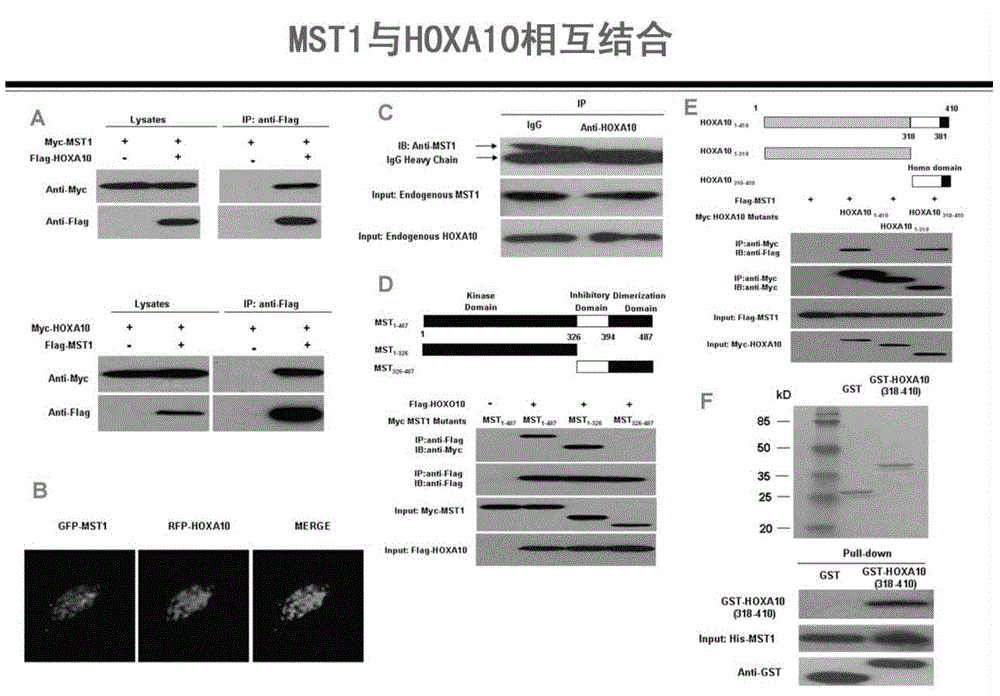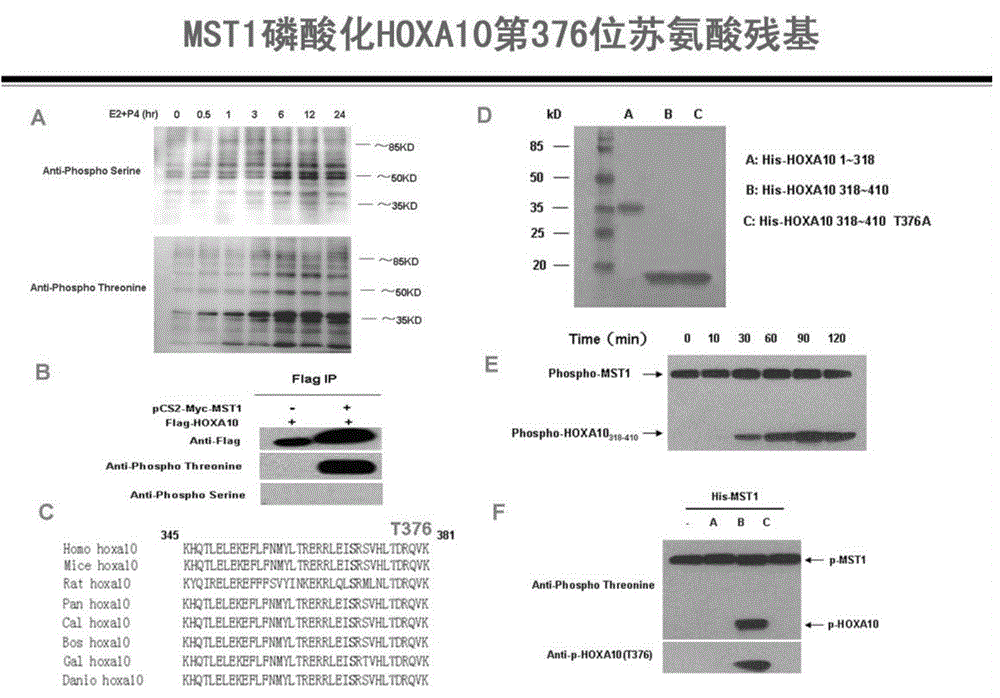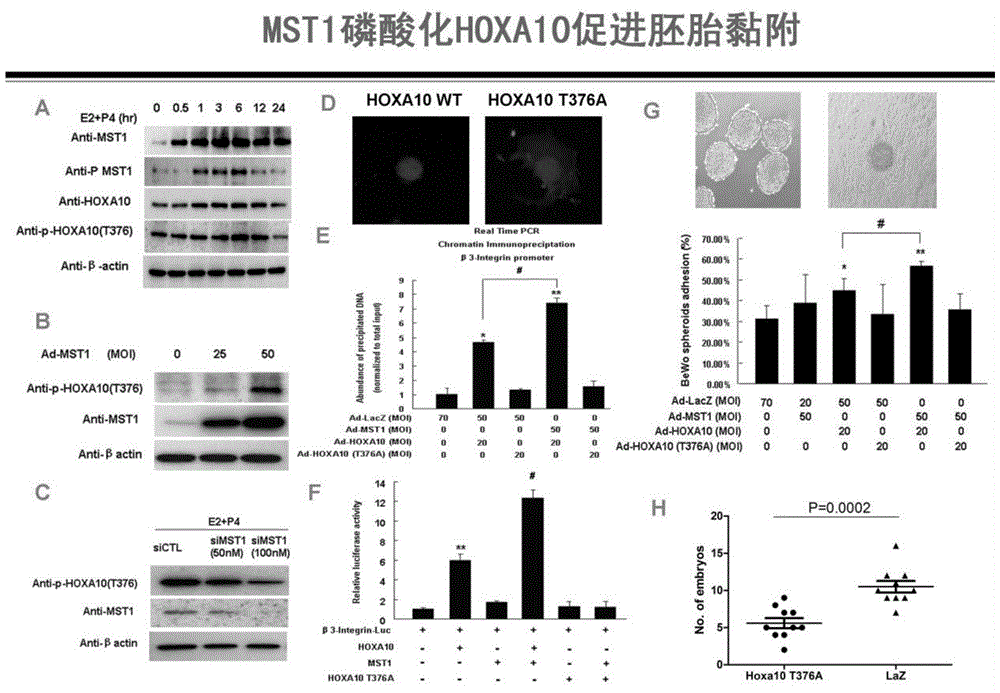Method for detecting endometrial receptivity through MST1 and phosphorylated MST1
A technology of MST1 and endometrium, applied in the field of obstetrics and gynecology, can solve the problems of inability to accurately and effectively predict the receptivity of abnormal endometrium
- Summary
- Abstract
- Description
- Claims
- Application Information
AI Technical Summary
Problems solved by technology
Method used
Image
Examples
Embodiment Construction
[0040] The present invention will be further described below in combination with specific embodiments.
[0041] A method for detecting phosphorylated HOXA10 as endometrial receptivity, comprising the following steps:
[0042] (1) Cell culture
[0043] Human endometrial cancer cell lines Ishikawa and HEK293T cells were maintained in DMEM / F12 medium (GibcoBRL / Invitrogen) containing 10% FBS and penicillin and streptomycin (100IU / mL penicillin and 100μg / mL streptomycin) , when the cells grew to 90% confluence, they were routinely digested and passaged with trypsin cell digestion solution (Trypsin-EDTA, Gibco BRL / Invitrogen) with a mass volume ratio of 0.25%, at 37°C, 5% CO 2 , Cultivated in saturated humidity.
[0044] (2) Western Blot
[0045] After Ishikawa or HEK293T cells were washed twice with pre-cooled PBS, 500 μL of cell lysis buffer [50.0mmol / L Tris pH=7.6, 150.0mmol / L NaCl, 0.1% SDS, 1.0% NP-40, Protease Inhibitor Cocktail, Phosphatase Inhibitor Cocktail (Sigma)], th...
PUM
 Login to View More
Login to View More Abstract
Description
Claims
Application Information
 Login to View More
Login to View More - R&D
- Intellectual Property
- Life Sciences
- Materials
- Tech Scout
- Unparalleled Data Quality
- Higher Quality Content
- 60% Fewer Hallucinations
Browse by: Latest US Patents, China's latest patents, Technical Efficacy Thesaurus, Application Domain, Technology Topic, Popular Technical Reports.
© 2025 PatSnap. All rights reserved.Legal|Privacy policy|Modern Slavery Act Transparency Statement|Sitemap|About US| Contact US: help@patsnap.com



